She didn't know it was National Pollinator Week.
If she had, she would have paid it no mind.
She just knew that this was some fine pollen as she struggled to fit inside the strawberry blossom.
The honey bee, Apis mellifera, is like that: determined, decisive, and mission-bound.
And they do love strawberries.
How much? In investigating the foraging behavior of bees in agricultural landscapes, a research team from the Universities of Göttingen, Sussex and Würzburg found that dance of the honey bee (waggle dance) indicated a fondness for strawberry fields over oilseed rape fields. They published their study in January 2020 in the journal Agriculture, Ecosystems & Environment. (See EurekAlert).
As we all know, honey bees dance to communicate the direction, distance and quality of the food source they have visited. These scientists video-recorded the dances and decoded them.
Berry, berry fine!
California growers--and we the consumers--reap the benefits of this bee love. Our state grows about 88 percent of the U.S.-grown strawberries on approximately 34,000 acres, according to the California Strawberry Commission. "Statewide fresh strawberry production averages 50,000 pounds per acre each season." The approximately 300 strawberry growers hail from five distinct areas: Watsonville/Salinas, Santa Maria, Oxnard, Orange County/San Diego, and the Central Valley.
The honey bee we saw foraging on a single strawberry blossom in our yard did so for about five minutes. She seemed to know that this was some fine pollen.
Some fine pollen, indeed.
She paused midway to clean the pollen from her proboscis (tongue).
Attached Images:
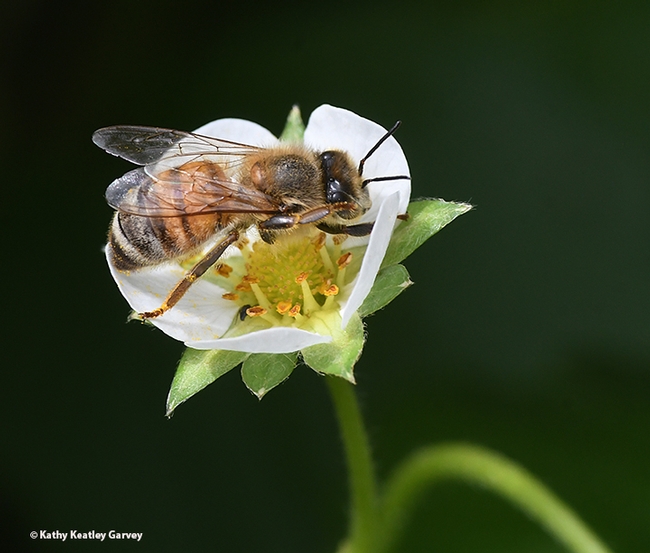
A honey bee struggles to fit inside a strawberry blossom. In the bee world, one size fits all.(Photo by Kathy Keatley Garvey)
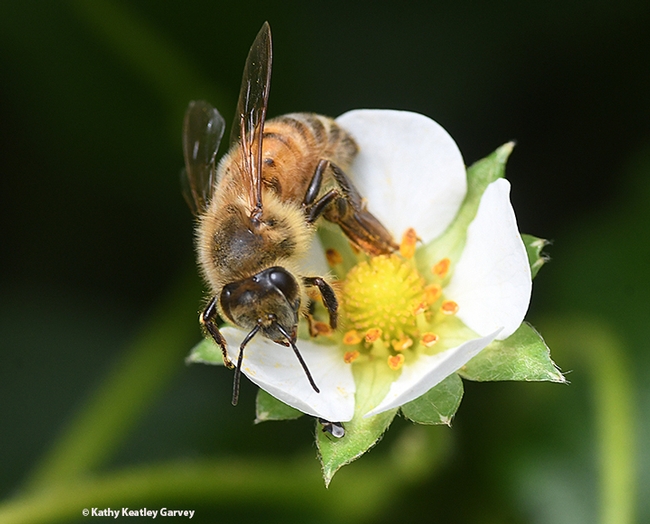
Berry berry fine, she pronounces. (Photo by Kathy Keatley Garvey)
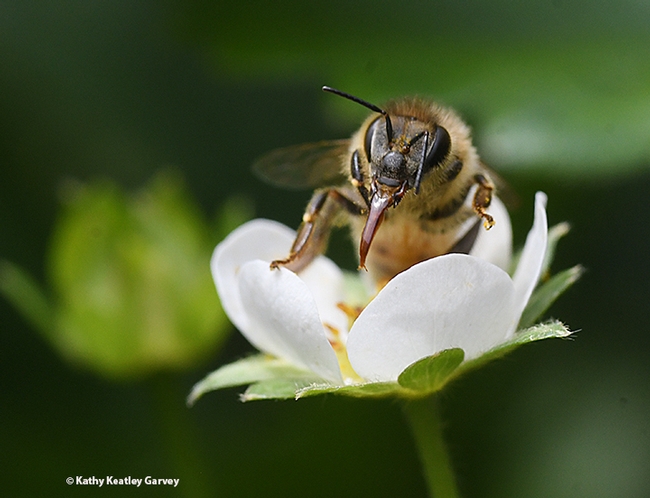
The honey bee thrusts out her proboscis (tongue). (Photo by Kathy Keatley Garvey)
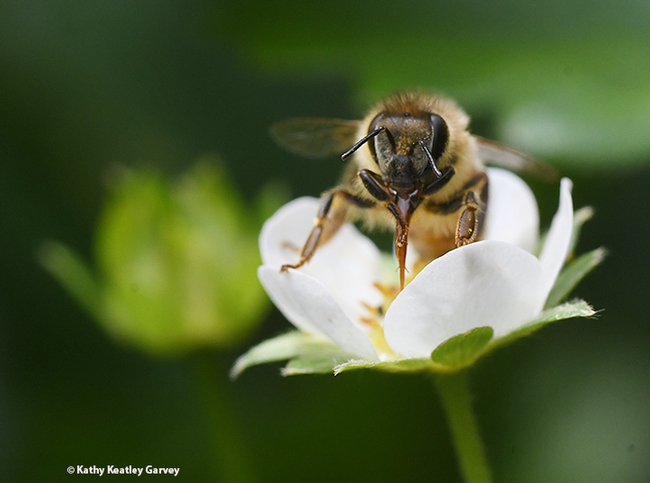
The honey bee stops to clean her tongue. (Photo by Kathy Keatley Garvey)
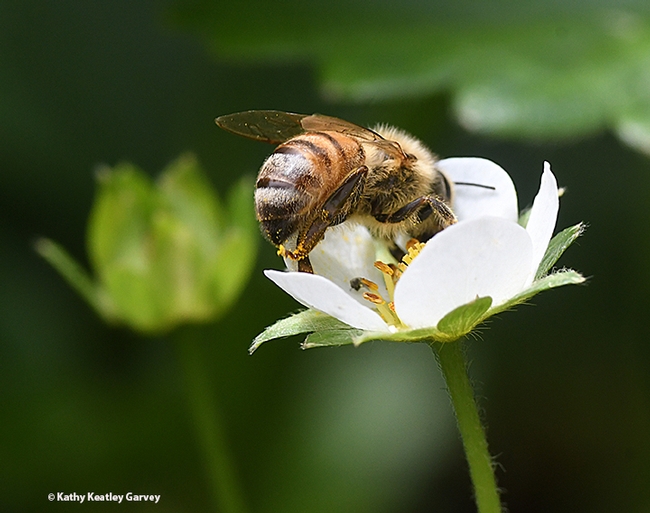
Okay, back to foraging. (Photo by Kathy Keatley Garvey)